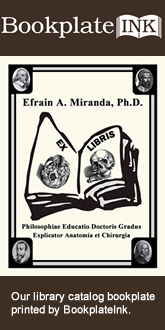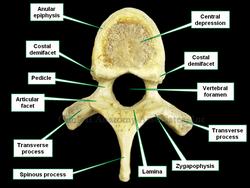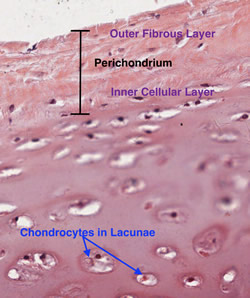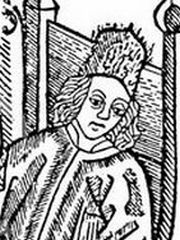
Medical Terminology Daily (MTD) is a blog sponsored by Clinical Anatomy Associates, Inc. as a service to the medical community. We post anatomical, medical or surgical terms, their meaning and usage, as well as biographical notes on anatomists, surgeons, and researchers through the ages. Be warned that some of the images used depict human anatomical specimens.
You are welcome to submit questions and suggestions using our "Contact Us" form. The information on this blog follows the terms on our "Privacy and Security Statement" and cannot be construed as medical guidance or instructions for treatment.
We have 2258 guests online

Georg Eduard Von Rindfleisch
(1836 – 1908)
German pathologist and histologist of Bavarian nobility ancestry. Rindfleisch studied medicine in Würzburg, Berlin, and Heidelberg, earning his MD in 1859 with the thesis “De Vasorum Genesi” (on the generation of vessels) under the tutelage of Rudolf Virchow (1821 - 1902). He then continued as a assistant to Virchow in a newly founded institute in Berlin. He then moved to Breslau in 1861 as an assistant to Rudolf Heidenhain (1834–1897), becoming a professor of pathological anatomy. In 1865 he became full professor in Bonn and in 1874 in Würzburg, where a new pathological institute was built according to his design (completed in 1878), where he worked until his retirement in 1906.
He was the first to describe the inflammatory background of multiple sclerosis in 1863, when he noted that demyelinated lesions have in their center small vessels that are surrounded by a leukocyte inflammatory infiltrate.
After extensive investigations, he suspected an infectious origin of tuberculosis - even before Robert Koch's detection of the tuberculosis bacillus in 1892. Rindfleisch 's special achievement is the description of the morphologically conspicuous macrophages in typhoid inflammation. His distinction between myocardial infarction and myocarditis in 1890 is also of lasting importance.
Associated eponyms
"Rindfleisch's folds": Usually a single semilunar fold of the serous surface of the pericardium around the origin of the aorta. Also known as the plica semilunaris aortæ.
"Rindfleisch's cells": Historical (and obsolete) name for eosinophilic leukocytes.
Personal note: G. Rindfleisch’s book “Traité D' Histologie Pathologique” 2nd edition (1873) is now part of my library. This book was translated from German to French by Dr. Frédéric Gross (1844-1927) , Associate Professor of the Medicine Faculty in Nancy, France. The book is dedicated to Dr. Theodore Billroth (1829-1894), an important surgeon whose pioneering work on subtotal gastrectomies paved the way for today’s robotic bariatric surgery. Dr. Miranda.
Sources:
1. "Stedmans Medical Eponyms" Forbis, P.; Bartolucci, SL; 1998 Williams and Wilkins
2. "Rindfleisch, Georg Eduard von (bayerischer Adel?)" Deutsche Biographie
3. "The pathology of multiple sclerosis and its evolution" Lassmann H. (1999) Philos Trans R Soc Lond B Biol Sci. 354 (1390): 1635–40.
4. “Traité D' Histologie Pathologique” G.E.
Rindfleisch 2nd Ed (1873) Ballieres et Fils. Paris, Translated by F Gross
"Clinical Anatomy Associates, Inc., and the contributors of "Medical Terminology Daily" wish to thank all individuals who donate their bodies and tissues for the advancement of education and research”.
Click here for more information
- Details
This article is part of the series "A Moment in History" where we honor those who have contributed to the growth of medical knowledge in the areas of anatomy, medicine, surgery, and medical research.
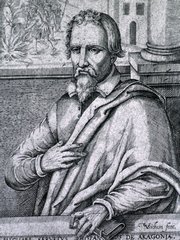
Michael Severtus
Michael Servetus (1511 -1553) was a Spanish theologian, physician, and anatomist. He is also known as Miguel Servet, Miguel Serveto, and Michel de Villeneuve. Servetus had studies in a multitude of fields, including catography, mathematics, pharmacology, astronomy, etc. He was born in 1511 in Aragon, Spain. Servetus started his studies in law in 1531and Medicine in 1536, where he excelled as an anatomist. Just as Andreas Vesalius and William Harvey, he clashed with the Galenic vision of anatomy and physiology. He correctly stated the theory of pulmonary circulation, but with no logical proof as Harvey.
Servetus was openly critical of the catholic church, publishing three books that openly questioned the Holy Trinity dogma. Servetus published his findings on pulmonary circulation in a controversial book "Cristianismi Restitutio", where pulmonary circulation was only one of the points he made which were mostly his position on the Holy Trinity and questioning the idea that everyone was predestined, as the catholic church professed at that time. His anatomical views were the least of his problems; because of this open criticism of Galen and the church. Servetus was burnt at the stake in Geneva on October 27, 1553.
Original image courtesy of National Library of Medicine.
- Details
The [vertebral endplate] is the term used to denote a structure formed by the superior (and inferior) aspect of the vertebral body and a layer of hyaline cartilage related to it. The vertebral endplate is formed by the cortical bone of the anular epiphysis, the central depression and the hyaline cartilage that fills the depresssion.
The vertebral endplate is important for the health of the intervertebral disk (IVD). Since the IVD loses its blood supply early in life all the nutrition to the IVD has to pass through the cortical bone and the hyaline cartilage. Note that hyaline cartilage is avascular. Separation of the components of the vertebral endplate due to trauma or other pathology can cause the IVD to become pathological.
The vertebral endplate also plays an important role in the biomechanics of spine movement. Being slightly incurved, the endplate acts as a shock absorber, bending up to 1/2 mm. Damage to the endplate can reduce this function and set the stage for failure of the endplate and a potential vertebral fracture.
Sometimes the IVD can herniate through the endplate causing what is known as "Schmorl's bodies".
Image property of: CAA.Inc.Photographer: David M. Klein
- Details
The medical word [avascular] means "without vessels" and refers to structures that do not have vessels providing it with blood supply. Avascular structures, like hyaline cartliage, receive their oxygen and nutrients by diffusion from nearby structures.
The preffix [-a-] means "without", and the root term [-vascul-] means "vessels".
- Details
Hyaline cartilage is a type of cartilage characterized by a very homogenous avascular matrix. It is the most common type of cartilage. Hyaline cartilage has a bluish glassy look to it, hence the name.
Within the matrix of hyaline cartilage there are spaces called "lacunae" wich contain chondrocytes. These produce and maintain the extracellular matrix. Hyaline cartilage is found covering articular surfaces allowing for effortless sliding of the articular surfaces one against the other. Hyaline cartilage is avascular.
The accompanying image is a histology slide of hyaline cartilage. For more information on hyaline cartilage, read the article "The Importance of Hyaline Cartilage"by Dr. Stephen Gallik.
The word "hyaline" is a derivate of the Greek [υαλώδης] (yalódis) meaning "glassy".
Thanks to Dr. Stephen Gallik for the mage and links. For more information on mammalian hystology, you can visit Dr. Gallik's website here.
Note: Google Translate includes the symbol (?). Clicking on it will allow you to hear the pronunciation of the word.
- Details
This term has two roots terms and a suffix. [-sacr-] means "sacred" , but in this case refers to the sacral bone or sacrum. [-colp-] means "vagina", and the suffix [-opexy] means "fixation", "surgical fixation", or "suspension". As always, the [-o-] between the initial two root terms means "and". Following the rules to combine root terms, the word [sacrocolpopexy] means "fixation of the sacrum and vagina". The term "sacrocolposuspension" is synonymous with "sacrocolpopexy"
The fixation or suspension can be attained by the use of sutures, surgical staples, bone tacks, mesh, etc. or a combination of these devices. A sacrocolpopexy can be needed in the case of a weakened or damaged pelvic diaphragm that can lead to urinary incontinency and recurrent urinary infections, among other problems.
• For a procedural video of sacrocolpopexy click here. WARNING: The video is age-restricted
- Details
This article is part of the series "A Moment in History" where we honor those who have contributed to the growth of medical knowledge in the areas of anatomy, medicine, surgery, and medical research.
Mondino de Luzzi (ca.1270 – 1326). Italian anatomist, born Raimondo de Luzzi in the city of Bologna circa 1270. He was also known as Mondino, Remondino, or Mundinus de Leutiis, de Lentiis, de Lucci, and other variations of his name. His father Nerino Franzoli was an apothecary, and Mondino also started working as such.
In 1290 he enrolled in the Medical School at the University of Bologna obtaining his medical degree circa 1290. Mondino stayed at the university, where he continued to teach until his death in 1326.
His major publication is “Anothomia Corporis Humani”, written circa 1316 and found only in manuscript form. It was finally printed in movable type in 1478, making it easily available to the public. While some authors like Singer, 1925 contend that this is his only publication, others discuss the possibility that Mondino de’ Luzzi wrote other books that have been adjudicated to other authors as at the time the name “Mondino” was very common.
“Anothomia Corporis Humani” is the first anatomical book based on actual dissections, and the book was organized almost as a dissection manual, explaining dissection techniques to visualize specific structures. Initially this book had no illustrations, but some were added in later publications.
With over 40 editions, the last one in 1668, this book was used for almost 250 years. Mondino restarted human dissections in medical schools almost 1,500 years the medical school of Alexandria, leading many to call Mondino the “restorer of anatomy”.
It is said that Leonardo da Vinci (1452 – 1519) used one of Mondino’s books as a dissection manual to guide his own. Because Mondino followed Galen’s dictums and teachings, he was harshly criticized for his errors by Andreas Vesalius (1514 – 1564).
Although it is not clear if Mondino himself performed the actual dissections (he says he did), it is clear that he directed them. We know of two of his assistants: Otto Agenio Lustrolanus and Alessandra Giliani, the first woman prosector and anatomist. When Mondino died the same year as Alessandra Giliani, the expectation was that his assistant would continue the work of the master. Sadly Otto Agenio Lustrolanus died before he was 30 years old.
In the introduction to “Anothomia” Mondino says: "A work upon any science or art-as saith Galen-is issued for three reasons: First, that one may satisfy his friends. Second, that he may exercise his best mental powers. Third, that he may be saved from the oblivion incident to old age. Therefore, moved by these three causes, I have proposed to my pupils to compose a certain work on Medicine.”
"And because a knowledge of the parts to be subjected to medicine (which is the human body, and the names of its various divisions) is a part of medical science, as saith Averrhoes in his first chapter, in the section on the definition of medicine, for this reason among others I have set out to lay before you the knowledge of the parts of the human body which is derived from anatomy, not attempting to use a lofty style, but the rather that which is suitable to a manual procedure."
Sources:
1. “Mondino de' Luzzi's commentary on the Canones Generales of Mesue the Younger” Welborn, MC. Isis , 22: 1 (1934) , 8-11
2. “Medieval neuroanatomy: the text of Mondino dei Luzzi and the plates of Guido da Vigevano” Orly R. J Hist Neurosci. 1997 6 (2):113-123
3. “Mondino de Luzzi (1270-1326) Restaurador de la Disecci?n Anat?mica” Rever?n, RR. Informe Medico 2007; 9 (12):589-592
4. “The history and illustration of anatomy in the Middle Ages” Gurunluoglu, R, et al. J Med Biogr 2013 21: 219 – 229
5. “The Mondino Myth” Pilcher, LS. 1906
Original image courtesy of NLM

